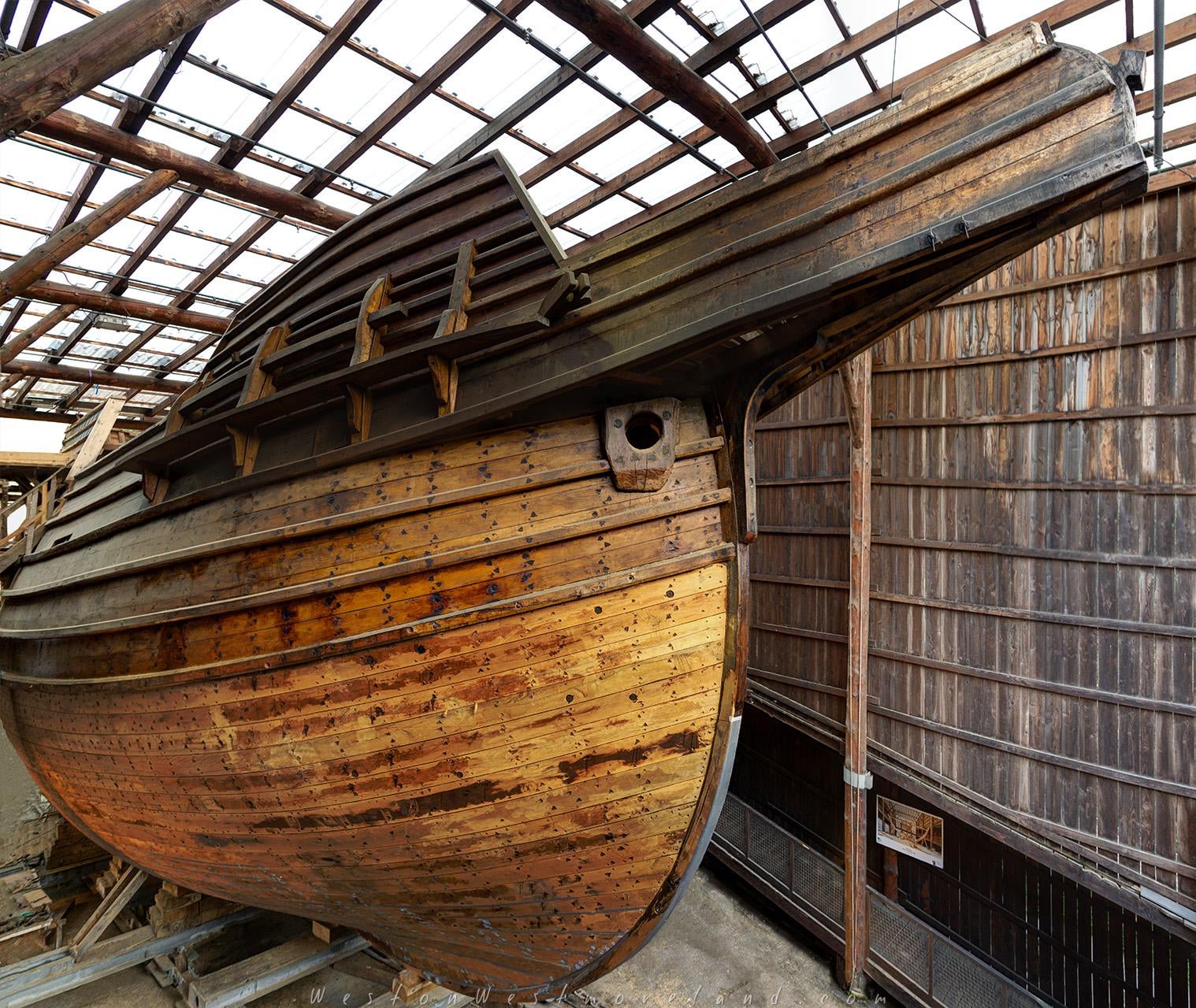
The nearly finished hull of the Basque Whaler San Juan, sunk in Newfoundland in 1665. Based on accurate measures taken from unaccountable shipwreck pieces, it is being constructed using the same techniques, tools and materials of the 17th century in the same port the original was… [1518×1280] [OC]
by WestonWestmoreland

1 Comment
Edit: Sorry, the ship was built in 1563 and sunk in 1565, 16th century🤦🏻♂️🤦🏻♂️🤦🏻♂️
…The hull will be launched on November the 7th, then the masts, rigging and sails, which are being produced at the dry dock with the original techniques for the most part, just as the nails, anchor, chains, rigging, sails, etc., will be mounted.
The construction has taken 12 years. The whalers of the 16th were built in six months. When the boat sunk it was loaded with whale oil, which at the time was used for lighting all over Europe. The load from that single journey would have been sold at what today would be 4 million €. With a crew of sixty, and a journey that took two months getting there, four months whaling and another month returning, the enterprise was hazardous but very profitable.
Once the ship is finished, a crew composed of half the men the original used (since nobody pretends to harm one single whale) will depart on its maiden trip to Newfoundland, to the coasts of Canada in Red Bay, where the original San Juan rests where a storm took her, to visit the Newfoundlanders and Canadians who have helped recreating this piece of vanguard technology of the 17th century. The men will be actually dressed in the fashion the original whalemen were, ant it ill not be atrezzo, and will live on the same food rations they ate.
The construction of all parts of the ship in a dry dock in Pasajes, near San Sebastian, in the Basque Country, Spain, has been open to public since 2012. You can watch the carpenters, the smiths… working There is an interpretation center that, once the maiden trip to Newfoundland is finished, will be introduced inside the ship and the San Juan will turn into a traveling museum and take this piece of history to the ports that will have her…
To learn more about the San Juan project, link [here. ](https://albaola.org/en/shared-history/)